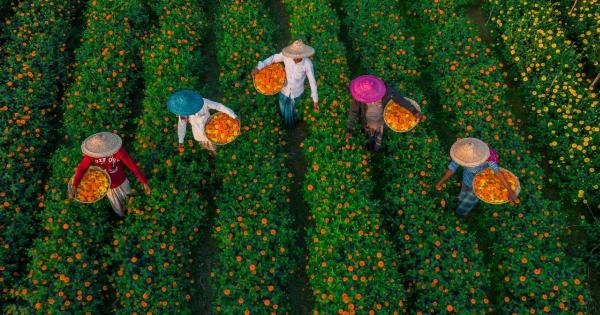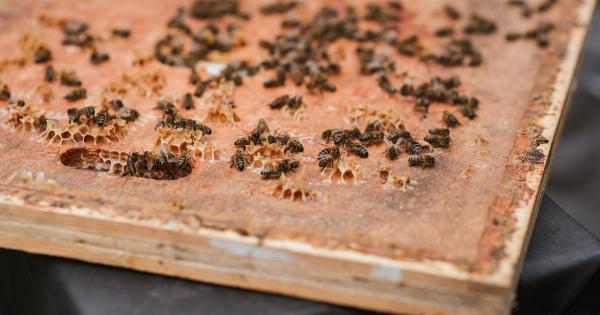Golden rice is a type of genetically modified rice that has been engineered to produce beta-carotene, a precursor of vitamin A.
It was developed in the late 1990s by a team of scientists led by Professor Ingo Potrykus and Professor Peter Beyer as a potential solution to vitamin A deficiency, which affects millions of people in the developing world. This article will explore the benefits and controversies surrounding golden rice, its impact on global food security, and the future of genetically modified crops.
What is Golden Rice?
Golden rice is a type of rice that has been genetically modified to produce beta-carotene, a yellow-orange pigment that is converted to vitamin A in the human body.
The rice was created using a combination of genetic engineering techniques that involve inserting genes from other organisms into the rice plant’s DNA. The genes that produce beta-carotene were taken from daffodil and a type of soil bacterium, and inserted into the rice cells using a bacterium called Agrobacterium.
Benefits of Golden Rice
Vitamin A deficiency is a major public health problem in many parts of the world, especially in developing countries where people rely mainly on rice as their staple food.
According to the World Health Organization (WHO), around 250 million preschool children are affected by vitamin A deficiency, and it can cause blindness, weakened immune system, and premature death.
Golden rice has the potential to address this problem by providing a sustainable source of vitamin A that is affordable and easily accessible to people in need.
Studies have shown that consuming a small serving of golden rice can provide up to 50% of the daily recommended intake of vitamin A, which can help prevent blindness and other health problems associated with vitamin A deficiency.
Moreover, golden rice has been modified to enhance the nutritional quality of rice, making it a more complete source of nutrients.
It has higher levels of iron and zinc, which are essential minerals for good health, and can help prevent anemia and other nutritional deficiencies.
Controversies Surrounding Golden Rice
The development of golden rice has been met with mixed reactions from the scientific community and the general public.
Some see it as a promising solution to a major health problem, while others are skeptical about its safety and potential impact on the environment and human health.
One of the main concerns about golden rice is that it is a genetically modified organism (GMO), which means that it contains genes that have been manipulated in a laboratory.
Many people are opposed to GMOs because they believe that they are unnatural and may pose risks to human health and the environment.
However, scientists argue that golden rice is safe for human consumption and has been thoroughly tested for toxicity and allergenicity.
They also point out that many of the foods we eat, such as cheese and bread, are already made from genetically modified organisms, and that there is no scientific evidence to suggest that GMOs are harmful to human health or the environment.
Another concern about golden rice is that it may lead to a reduction in the consumption of other nutrient-rich foods, such as fruits and vegetables.
Some critics argue that by promoting golden rice as a solution to vitamin A deficiency, it may discourage people from eating a diverse and balanced diet, which is essential for good health.
Impact of Golden Rice on Global Food Security
Golden rice has the potential to address the problem of vitamin A deficiency in many parts of the world, especially in developing countries where people depend on rice as their main source of food.
It can help reduce the burden of disease and improve the overall health and wellbeing of millions of people.
Moreover, golden rice can help improve food security by providing a more nutritious and sustainable source of food.
It can help reduce the reliance on synthetic vitamin A supplements, which are expensive and difficult to distribute in remote and rural areas. It can also help reduce the need for excessive use of chemical fertilizers and pesticides, which can have negative impacts on the environment and human health.
However, the widespread adoption of golden rice still faces many challenges, such as regulatory barriers and the high cost of production.
It is also important to ensure that golden rice is part of a broader strategy to address vitamin A deficiency, and not seen as a silver bullet solution to a complex problem.
The Future of Genetically Modified Crops
Golden rice is just one example of how genetic engineering can be used for the benefit of humanity.
There are many other genetically modified crops that have the potential to address global challenges such as climate change, food insecurity, and disease.
However, the adoption of genetically modified crops still faces many political, social, and economic challenges.
There is still a lack of consensus on the safety and feasibility of GMOs, and many countries have strict regulations on their production and distribution.
Moreover, there are concerns that large agribusiness companies may monopolize the market for genetically modified crops, and that they may have negative impacts on small-scale farmers and the environment.
Despite these challenges, the potential benefits of genetically modified crops cannot be ignored.
As the world faces increasingly complex challenges related to food security, health, and sustainability, genetic engineering may offer innovative solutions that can help us create a more resilient and equitable world.





























